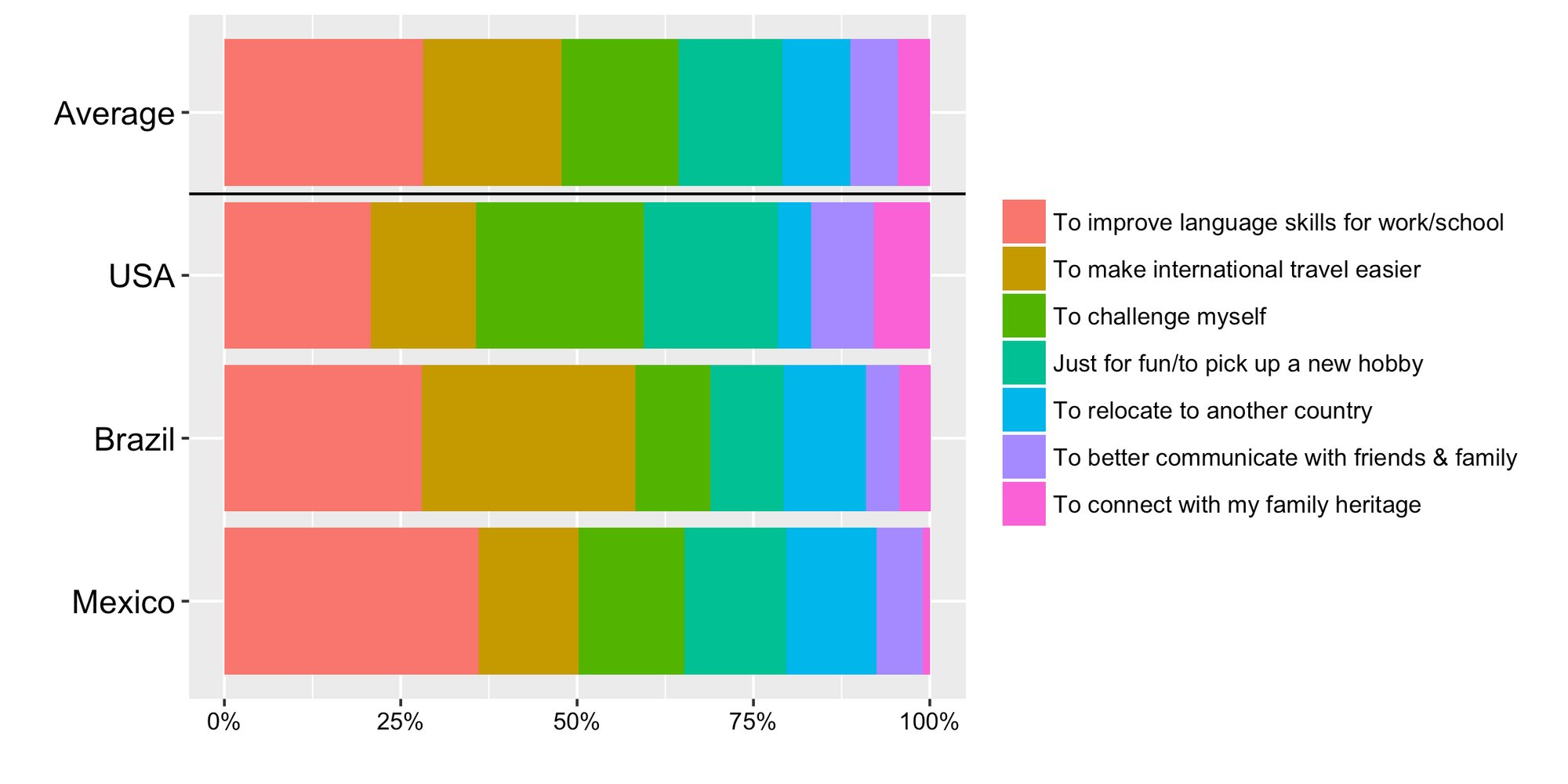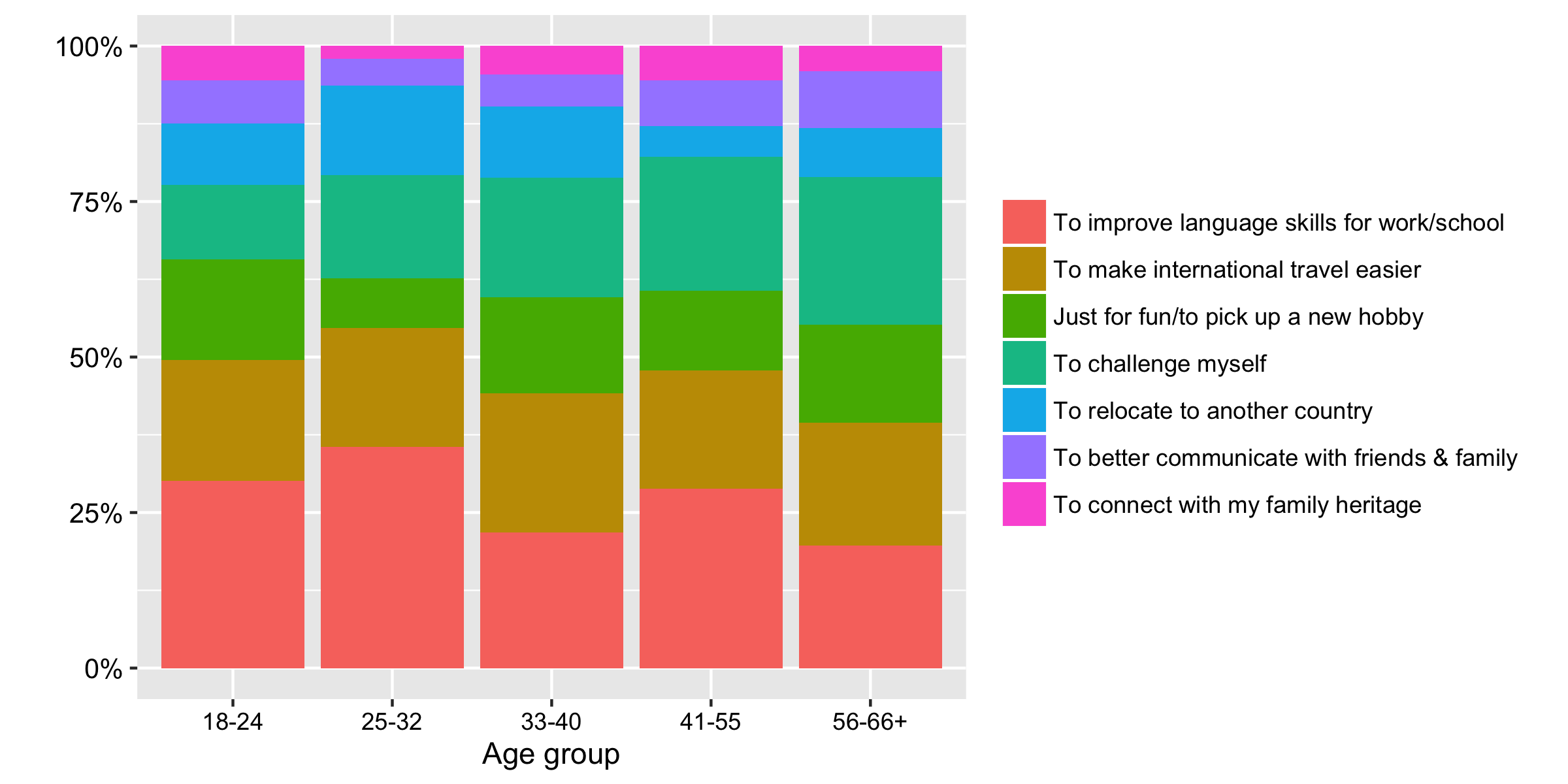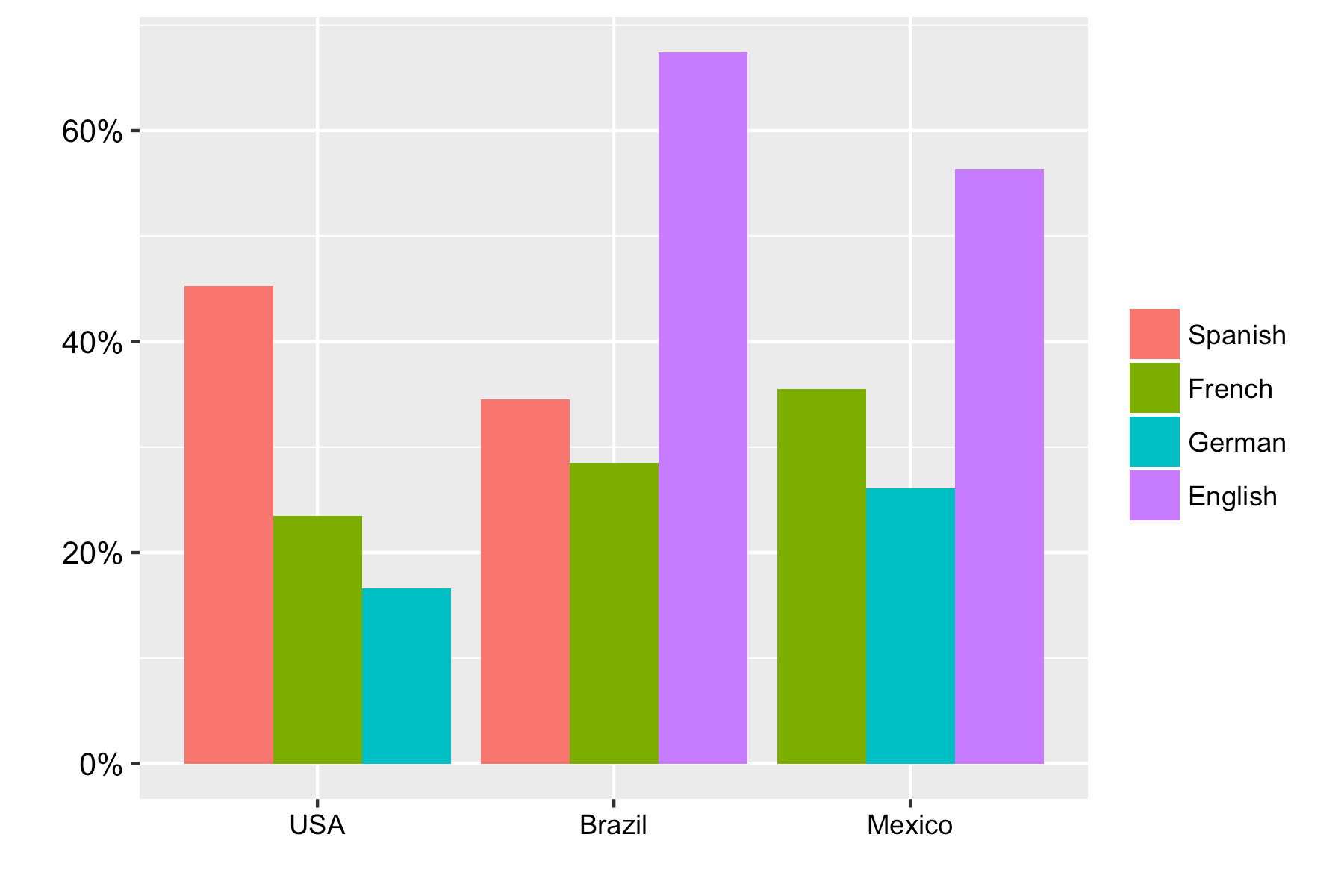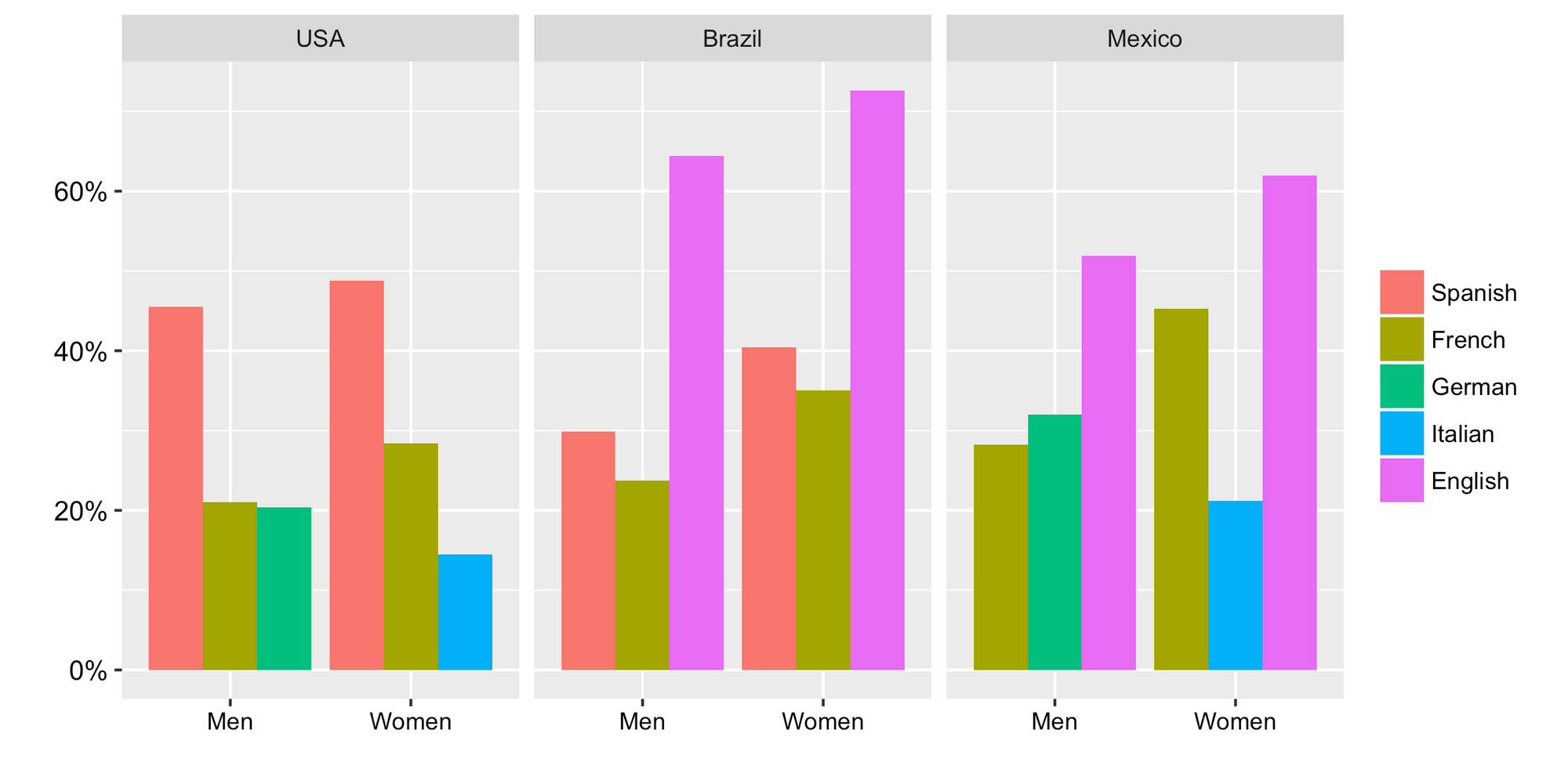Now that it’s January, it’s out with the winter holidays and in with New Year’s resolutions. Whether it’s losing weight, saving money, or learning something new, millions of people around the world resolve to better themselves at the beginning of every year.
Learning a new language happens to be one of the most popular resolutions worldwide. In fact, this past New Year’s, more people Googled "learn language” than “get fit.” Duolingo actually sees its largest spike in users during this period, many of whom are drawn to the bite-sized lessons, game-like experience and daily commitment of just a few minutes of practice.
Duolingo surveyed 6,534 adults in the U.S., Brazil and Mexico about their New Year’s resolutions[1]. Our results show interesting variations across geographies, gender and age about people’s goals and motivations for the New Year.
Here are some quick highlights of the most interesting findings, with more details on the results below:
- People in the U.S., Mexico and Brazil are learning languages for different reasons.
- Women and men gravitate toward learning different languages.
- People of different ages have different motivations to learn languages, with millennials and those who are 41-55 finally agreeing on something!
- Given recent events, people worldwide think learning a language has become more important.
Top New Year’s resolutions differ across countries
When asked about the New Year’s resolutions that respondents planned to make for 2017, the top three were: “Enjoy life to the fullest,” “stay fit and healthy,” and “save more money.”
About 21% of total respondents said “learning a new language” is one of their resolutions for 2017. However, we found that interest in learning a language varies a great deal by country.
For instance, Mexico came out on top, with 43.4% of Mexican respondents selecting this resolution, followed by 38.6% of Brazilian respondents. The U.S. came in last, with just 11.2% of respondents choosing this resolution.
Reasons for learning a language vary across countries and age groups
Why do people want to learn a new language in the first place? Just as with New Year’s resolutions, we found that motivations for learning languages differ from country to country (see Fig. 1), as well as by age group.
Differences in motivations across countries
In Mexico, the primary reason selected to learn a language is “to improve language skills for work/school” (36%). This is not surprising, as a recent study found that learning English in Mexico correlates strongly with better employment prospects and quality of life.
In Brazil, it’s all about wanderlust: the highest proportion of Brazilian respondents (30.3%) selected “to make international travel easier” as their primary motivation for learning a language.
And in the U.S., the primary reason (among 23.8% of respondents) for learning a language is “to challenge myself.”

Differences in motivations across age groups
As with countries, we identified some interesting differences among age groups in their motivations to learn languages (see Fig. 2).
Both millennials (those aged 18-32) and respondents aged 41-55 chose “improving skills for work/school” as their primary motivation (31.5% and 28.8%, respectively), while Gen Xers (33-40) selected “to make international travel easier” (22.4%). Older generations (56-66 and older) selected “to challenge myself” as their primary motivation (22.4%).

Language choices vary across geographies and genders, too
We also found intriguing variations in the languages people choose to learn, with the biggest differences related to geography and gender.
Language choices according to geography
Unsurprisingly, the languages people prefer to learn depend a lot on where they live (see Fig. 3). In the U.S., most respondents chose Spanish as the language they plan to learn this year (45.3%), followed by French and German.
In Brazil and Mexico, on the other hand, English comes out on top, with 67.4% of Brazilian respondents and 56.3% of Mexican respondents saying they plan to learn English. Following English, Brazilians are interested in learning Spanish and French, whereas Mexicans are interested in French and German.

Language choices according to gender
As our survey found, gender also plays a role in determining language preferences (see Fig. 4). Overall, women are mostly interested in learning French and Italian, while men prefer learning German.

A lot more people want to learn a language now because of “current events”
Among the most interesting findings we uncovered was how recent global events have affected people’s desires to learn new languages. With world events such as the June Brexit vote and the November election of Donald Trump as president of the United States, we weren’t surprised to see a strong response. We found that across all three countries, the vast majority of respondents feel that given current events it’s “much more important” to learn a language now than it was one year ago (70.1%).
Just as with all of our other findings, this varied from country to country (see Fig. 5). In Mexico, 82.2% of respondents said they feel it’s much more important, compared to 79% of Brazilians and 49.8% of Americans.

As we’ve found, geography, gender and age have a lot to do with how people approach their New Year’s resolutions, especially learning a language.
Now, whether people actually stick to their resolutions is another story (for more on that, check out our blog post last year on which countries are best at keeping their resolutions). For our part, we just introduced a new social feature called Duolingo Language Clubs to make it easier. Clubs allow friends and family members to create their own groups to keep each other on track with friendly nudging and competition. It’s like having gym buddies, but for your brain!
Happy New Year! May learning new languages in 2017 help people of different backgrounds understand each other better.
Duolingo conducted the survey via Google Consumer Surveys between November 29, 2016 and December 3, 2016. We surveyed a total of 6,534 adults in the U.S., Brazil and Mexico, and received 1,184 complete responses – a representative, statistically significant sample of adults. ↩︎